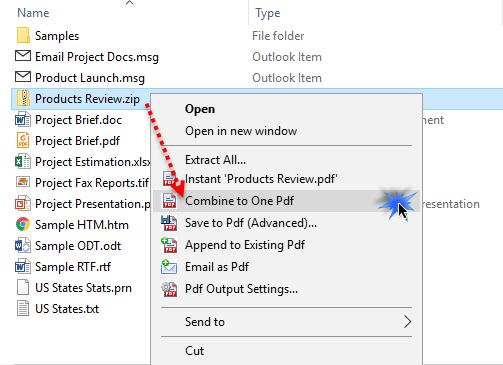| Name | ZIP | |
| Full name | PDF - Portable Document Format | ZIP - ZIP Archive |
| File extension | .zip, .zipx | |
| MIME type | application/pdf, application/x-pdf, application/x-bzpdf, application/x-gzpdf | application/zip |
| Developed by | Adobe Systems | Phil Katz, PKWARE, Inc. |
| Type of format | Document format | Data compression |
| Description | The Portable Document Format (PDF) is a file format used to present documents independent of application software, hardware, and operating systems. Each PDF file encapsulates a complete description of a fixed-layout flat document, including the text, fonts, graphics, and other information needed to display it. | ZIP is an archive file format that supports lossless data compression. A .zip file may contain one or more files or directories that may have been compressed. The .zip file format permits many compression algorithms, though DEFLATE is the most common. |
| Technical details | The PDF combines three technologies: A subset of the PostScript page description programming language for generating the layout and graphics. A font-embedding/replacement system to allow fonts to travel with the documents. A structured storage system bundles these elements and any associated content into a single file, with data compression where appropriate. | ZIP files are archives that store multiple files.ZIP allows contained files to be compressed using many different methods and simply storing a file without compressing it. Instead, each file is stored separately, allowing different files in the same archive to be compressed using different methods. |
| File conversion | PDF conversion | ZIP conversion |
| Associated programs | Adobe Acrobat, Adobe InDesign, Adobe FrameMaker, Adobe Illustrator, Adobe Photoshop, Google Docs, LibreOffice, Microsoft Office, Foxit Reader, Ghostscript. | Microsoft Windows, WinZip, WinRAR, IZarc, Info-ZIP, 7-Zip, PeaZip, B1 Free Archiver, DotNetZip. |
| Wiki | https://en.wikipedia.org/wiki/Portable_Document_Format | https://en.wikipedia.org/wiki/Zip_(file_format) |



- Turning a conventional file (whether picture, video, music file, document or other type) or folder into a compressed zip file is very easy on a Mac: Right-click (or Ctrl-click) the file or folder.
- However, you could easily test it by doing so, and emailing the resulting zip file to a friend, and trying open said zip file on your friend's computer - that would be a a pretty sureshot test – inspectorG4dget.
Compressed Zip Folder
Locate the file or folder that you want to zip. Press and hold (or right-click) the file or folder, select (or point to) Send to, and then select Compressed (zipped) folder. A new zipped folder with the same name is created in the same location. To rename it, press and hold (or right-click) the folder, select Rename, and then type the new name.